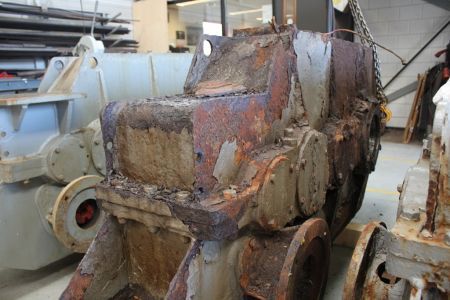
Jacking gears are by definition the most characteristic systems of self-elevating units and jack-ups. However, this gear remains often neglected on board, with a high potential for dire consequences. In order to achieve higher availability, reduce the risk of gear failure and lower the life cycle cost, DNV is inviting the industry to participate in a Joint Industry Project (JIP). The project’s main focus will be on defining best practices in the maintenance and inspection of jacking gears.
“The consequences of jacking gear failure range from the operator being unable to reposition the platform to logistical challenges in correcting the failure. The worst case scenario is if the failure occurs in the middle of a jacking operation, as this may lead to an unstable platform that is prone to wave impacts.This implies a concrete danger to the unit,” says DNV’s Offshore Class product manager, Michiel van der Geest.
Facing these risks, the need for professional follow-up in the inspection and maintenance of jacking gear is obvious, but not directly straightforward from a practical point of view. “The high turnover of people with specific knowledge on board, the evolving nature of the systems and the natural focus on merely the production process and systems on board make this follow-up often challenging for an owner,” Michiel van der Geest explains.
Based on their respective backgrounds as a classification society and recognised service supplier, DNV and Dutch company WillTeco have now initiated a project to improve the inspection and maintenance of jacking gears.
“In our experience, the best way of solving common industry challenges is to join forces,” explains Michiel van der Geest, “so we decided to carry out the initiative in a JIP and directly invite all the players in the self-elevating segment to participate. It’s only by including the experiences and relevant considerations of other industry players that the objectives of the individual partners can be reached,” he states.
The JIP’s goal is to develop a recommended practice document that describes the solution to achieve higher availability and at the same time reduces the risk of jacking gear failure. The overall life cycle cost will also be on the agenda. The JIP plans to collect and analyse experienced (near) incidents, mutually review current inspection and maintenance work supported by risk-based modelling and, finally, define and select best practices.
We use cookies to improve your experience. By continuing to use our site, you accept our Cookies, Privacy Policy,Terms and Conditions. Close X